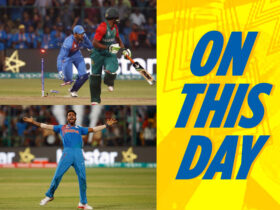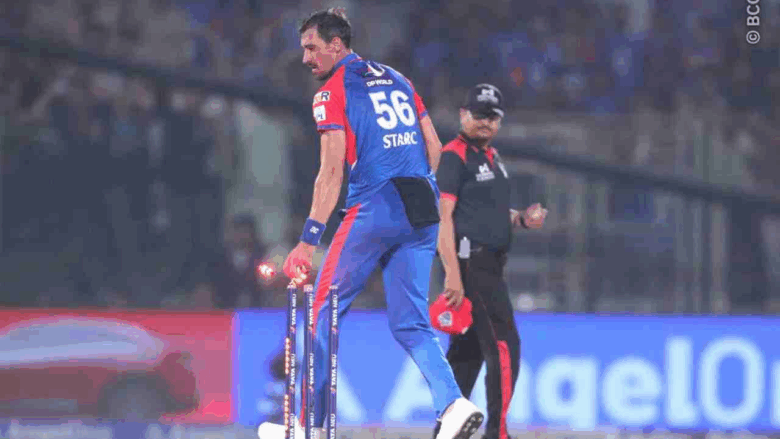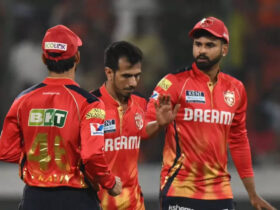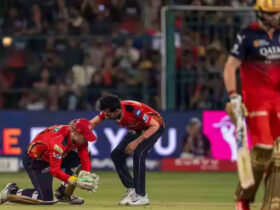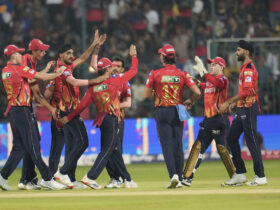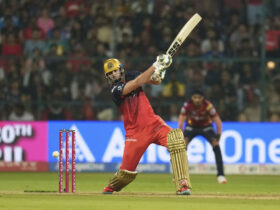In a heart-stopping clash during the IPL 2025 season, the Super Over between Rajasthan Royals and Delhi Capitals delivered a moment of rare drama that left fans, players, and pundits in disbelief. At the center of the storm was none other than Australian pace spearhead Mitchell Starc, whose infrequent breach of a little-known cricket rule — a back-foot no-ball — turned the tide in a nail-biting finish at New Delhi’s Arun Jaitley Stadium.
Tasked with defending a modest target in the pressure-cooker environment of a Super Over, Starc had already leaked nine runs off his first four deliveries. With tension soaring, the fifth ball loomed as a potential match-decider. However, before the ball could even be bowled, the third umpire’s intervention stunned everyone. A meticulous replay revealed that Starc’s fourth delivery was deemed illegal — not due to the common front-foot violation fans are accustomed to, but because his back foot had grazed the return crease, an infringement under cricket’s esoteric regulations.
According to Law 21.5 of the MCC’s Laws of Cricket, a bowler’s back foot must land within the return crease during the delivery stride without touching the line. Starc, bowling around the wicket to Royals’ explosive right-hander Riyan Parag, inadvertently allowed his left foot to clip the line — an automatic no-ball. Unlike the front-foot rule, which permits part of the foot to be behind the popping crease, the back-foot regulation is uncompromising: any contact with the return crease results in a penalty. This rule, designed to prevent bowlers from gaining unfair angles that could complicate umpiring decisions, is seldom invoked but proved decisive in this high-stakes scenario.
The consequence of this rare call was immediate and costly for Delhi Capitals. Rajasthan Royals were awarded a free hit along with an extra run, shifting the momentum in their favor at a critical juncture. For Starc, a bowler renowned for his precision and composure with over 300 international wickets across formats, this oversight was a frustrating blemish in an otherwise stellar career. Fortunately for him and Capitals’ fans, the team managed to weather the storm and clinch the match, with Starc holding his nerve to restrict further damage.
Beyond the game itself, this incident has reignited discussions about cricket’s labyrinthine rulebook. Social media platforms erupted with debates, as fans and analysts questioned whether such obscure laws have a place in the fast-paced, high-pressure environment of T20 cricket. Some argued that the rule, while technically fair, disproportionately penalizes bowlers under intense scrutiny, while others defended its necessity to maintain the game’s integrity. Starc himself, in a post-match interview, admitted to being caught off-guard, stating, “I wasn’t even aware I’d touched the line. It’s a harsh call, but rules are rules.”
Historically, back-foot no-balls are a rarity in elite cricket, with fewer than a dozen notable instances in the past decade across international and franchise leagues. The last prominent case in the IPL occurred in 2019, involving a lesser-known bowler, but Starc’s high-profile mistake has thrust this rule back into the spotlight. For context, Starc’s bowling average in the IPL stands at an impressive 24.5 over the years, with his fiery pace and deadly yorkers often proving unplayable in death overs — making this lapse all the more surprising.
As the IPL 2025 season heats up, this Super Over saga serves as a reminder of cricket’s unpredictability and the fine margins that separate victory from defeat. For Mitchell Starc and Delhi Capitals, it’s a lesson in the minutiae of the game; for fans, it’s yet another chapter in the tournament’s storied history of drama. Will this incident prompt a reevaluation of such rules, or will it remain a quirky footnote in Starc’s illustrious career? Only time will tell, but one thing is certain — the IPL never fails to captivate.


